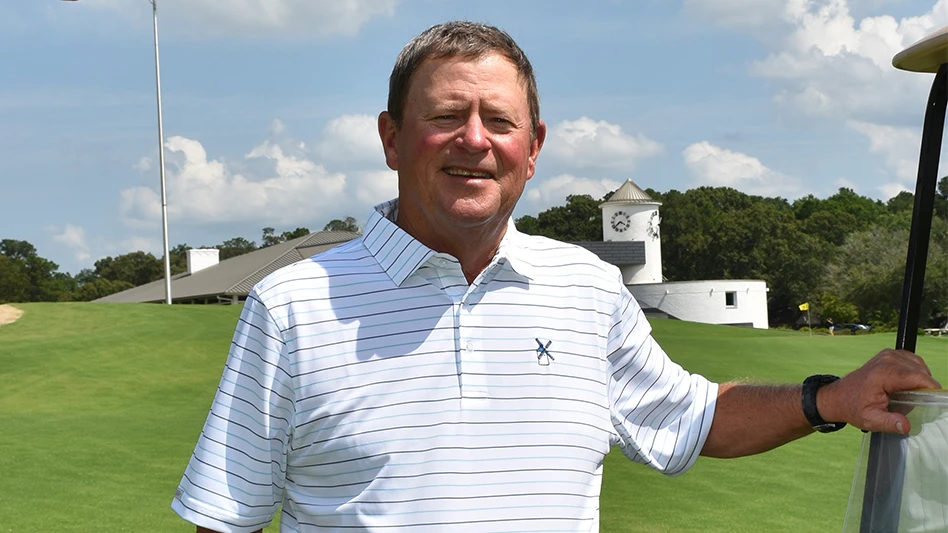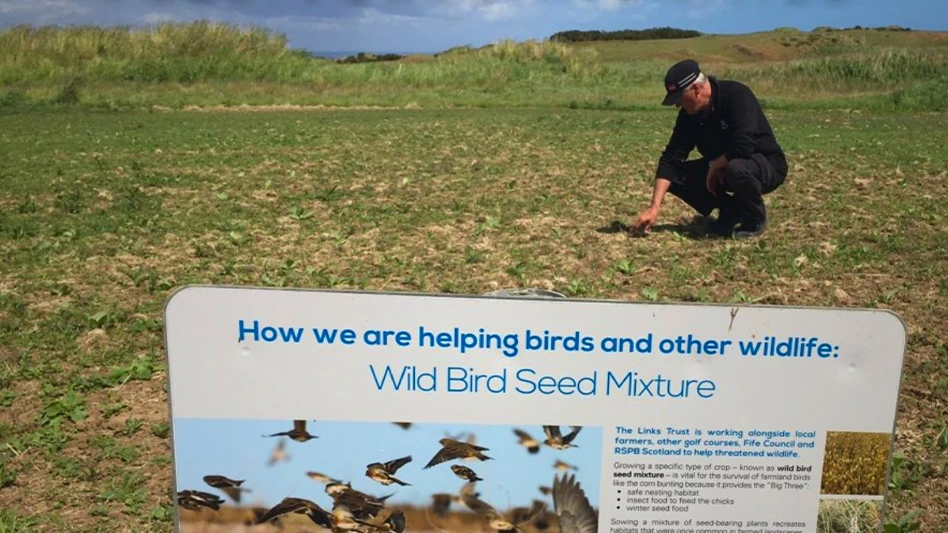
Ah, Poa annua, annual bluegrass. Friend and foe. Weed and thriving turfgrass. If only it would stay where it is wanted. This C3 plant requires significant water and fertilizer, is susceptible to several diseases and pests, has a poor wear tolerance, is a cheerful bright green, produces panicle seedheads for most of the growing season and is shade tolerant. What is Poa annua’s kryptonite? Heat.
How much heat is too much for Poa annua? Dr. Shawn Askew, a professor at Virginia Tech’s School of Plant and Environmental Sciences, and his students have been conducting research for the second winter in a row to discover the answer.
More specifically, Askew and his students are applying thermal treatments to kill annual bluegrass organically in dormant warm-season turf. The hypothesis is that organic treatments are capable of controlling winter weeds similarly to synthetic herbicides.
Annual bluegrass can out-compete warm-season grasses, such as zoysiagrass and Bermudagrass, when they are dormant. Expectations for sustainability and course conditioning have never been higher. It’s important to pursue ways to mitigate Poa infestations without the use of herbicides due to growing public and regulatory concerns over their use, potential for chemical resistance and other reasons.
Radiant heat and hot water have seen their use limited for weed control because they tend to cause damage uniformly — they lack selectivity. However, Askew and his students are determining whether these treatments might be safe for dormant warm-season grasses. They are comparing the effectiveness of these organic treatments against widely used synthetic herbicides.
To measure the effectiveness, the Virginia Tech team has been testing the heat-producing effects on annual bluegrass density and cover in dormant zoysiagrass compared to synthetic herbicide standards. They used randomized complete block design (RBCD), which is just what it sounds like, with experimental plots randomly established as blocks. They administered seven treatments and the experiment had four replicates.
During the first winter, data was collected from mid-December 2022 to mid-April 2023. With each treatment, the team measured soil moisture, soil temperature and surface temperature at three locations in each plot. They counted the annual bluegrass plants, estimated annual bluegrass cover and noted any final zoysiagrass injury.
The heat-based treatments were applied in two ways. Water was heated to 95 degrees Celsius and sprayed at 61 kL ha -1. For plots being tested with radiant heat, a metal plate was heated to 300 degrees Celsius and placed 3.8 centimeters above the turf for 15 seconds.
Hot water delivered every two weeks reduced annual bluegrass cover equivalent to the use of glyphosate. The radiant heat generally suppressed annual bluegrass and reduced plant size more than plant density allowing plants to recover once treatments had stopped.
Results indicate that thermal treatments, especially hot water, show promise for annual bluegrass suppression in dormant warm-season turf. Hot water may be especially well suited to individual plant treatment of low-percentage escaped weeds rather than broadcast treatments due to its relative cost effectiveness. Additional research is needed. Better, even more cost-effective methods to utilize thermal treatments may offer a solution to herbicide-resistant weeds.
This year, Askew and his team are continuing their research of hot water and radiant heat on dormant warm-season turf. In January, a blanket of snow was complicating their trials but in true Hokie fashion, they pushed it aside and got to work. They continue to tackle a host of issues that will benefit the golf course maintenance industry.
- One student is using lasers and cryogenic liquid to kill weeds on greens.
- One student is measuring how turf protection products change the UV patterns on weedy turf flowers (these are invisible to humans) and alter honey bee foraging habits. The student is designing treatments to deter, and therefore protect, bees from visiting weedy turf where insecticides must be applied.
- One student has made two discoveries that are changing how professionals in the mid-Atlantic manage crabgrass and goosegrass on greens. His work shows that switching your PGR program from Trinexapac-ethyl to Flurprimidol will eliminate 75 to 100 percent of crabgrass and goosegrass on greens. There has been a lot of positive feedback from superintendents, academics and others in the industry. This same student has shown that several turf fungicides, especially Chlorothalonil, strongly antagonize many herbicides. At a course where trial work was conducted and the research was then practically applied, results were different than expected for weed control. The VT team hypothesized that fungicides were the disruptor and they learned that, surprisingly, fungicides can reduce weed control by half.
Watch this space because there is always more to learn. Dr. Askew and his students aren’t going to let a little snow — or Poa — get in the way of their research.
Lee Carr is a northeast Ohio-based writer and senior Golf Course Industry contributor.
Latest from Golf Course Industry
- Florida's Windsor takes environmental step
- Heritage Golf Group expands into Tennessee
- GCSAA names Grassroots Ambassador Leadership Award winners
- Turf & Soil Diagnostics promotes Duane Otto to president
- Reel Turf Techs: Ben Herberger
- Brian Costello elected ASGCA president
- The Aquatrols Company story
- Albaugh receives registration for chlorantraniliprole





